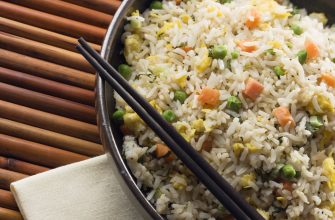The Deep Roots of Asian Tea
Tea has been an integral part of Asian culture for thousands of years. The fragrant leaves, once deemed a medicinal elixir, now grace tables in many homes and tea houses across the continent. But Asian tea is more than just a hot beverage. It’s a symbol of hospitality, a means of meditation, and a link to the past.
Tea Traditions and Ceremonies
![]()
In China, the cradle of tea, the art of tea-making is deeply intertwined with spirituality. The traditional Chinese tea ceremony, known as Gongfu Cha, is a ritualized form of making tea. The ceremony emphasizes the tea rather than the ceremony itself. It’s about brewing the best possible tea and enjoying it fully.
Japan, on the other hand, has elevated tea-making into a spiritual discipline through its Chanoyu, or “the way of tea.” Rooted in Zen Buddhism, this tea ceremony reflects the concepts of tranquility, respect, purity, and harmony. Every movement is carefully choreographed, and each utensil used is treated with immense respect.
India and Sri Lanka, known for their robust black teas, don’t have formal tea ceremonies. Yet, tea holds a significant place in their daily lives. In India, chai is more than a spiced tea—it’s a daily ritual, a symbol of hospitality, and a conversation starter.
Asian Tea Recipes to Try at Home
Tea isn’t just limited to your regular brew. Here are some unique Asian tea recipes you can try at home.
Matcha Latte: This Japanese-inspired latte is a delightful blend of matcha (green tea powder), warm milk, and a touch of sweetener. It’s creamy, frothy, and packed with antioxidants.
Thai Iced Tea: Known in Thailand as Cha Yen, this iced tea is a refreshing blend of strong black tea, sweetened condensed milk, and spices like star anise and tamarind. It’s served chilled with a good amount of crushed ice.
Teh Tarik: Literally meaning “pulled tea,” this Malaysian specialty is a frothy tea reminiscent of a chai latte. It’s a strong black tea sweetened with condensed milk and “pulled” between two cups until frothy.
Discovering Different Types of Asian Tea
![]()
Asia is home to countless types of tea, each with its unique flavor profile and properties. Let’s take a journey through the tea fields of Asia and discover some of the most popular varieties.
Chinese Teas: The Pioneers of Flavor
China is the birthplace of tea, and it boasts an impressive array of tea types. From the delicate and fragrant Jasmine Tea to the highly prized Pu-erh, Chinese teas offer an adventure for your taste buds. Don’t forget to try Oolong, a traditional Chinese tea that sits beautifully between green and black tea in terms of oxidation.
Japanese Teas: A Blend of Tradition and Innovation
Japan may be known for its Matcha, a powdered green tea used in tea ceremonies, but there are many more to explore. Genmaicha, a combination of green tea and roasted rice, gives a delightful nutty flavor. Hojicha, roasted green tea, offers a toasty, caramel-like taste that’s a perfect introduction for tea novices.
Indian Teas: Bold and Aromatic
Indian teas are famous for their robust flavors. Assam, a full-bodied black tea, is often used as the base for Masala Chai, a spiced tea brewed with milk and a blend of spices like cardamom, cinnamon, and ginger. Darjeeling, often referred to as the “Champagne of teas,” is prized for its delicate flavor reminiscent of muscatel grapes.
Exploring Tea Pairings
Just like wine, tea can be paired with different foods to enhance both the tea and the dish. Generally, bold teas like Assam or Pu-erh pair well with rich, hearty dishes, while delicate teas like Jasmine or Darjeeling are better suited to lighter fare like seafood or pastries. Experimenting with different combinations can lead to delightful culinary discoveries.
Conclusion: A Sip of Asia
The world of Asian tea is as diverse as it is flavorful. Whether you prefer the bold flavors of Indian Assam, the delicate aroma of Chinese Jasmine, or the unique taste of Japanese Genmaicha, there’s a tea for every palate. So, why not embark on a tea-tasting journey and steep yourself in Asian culture?

